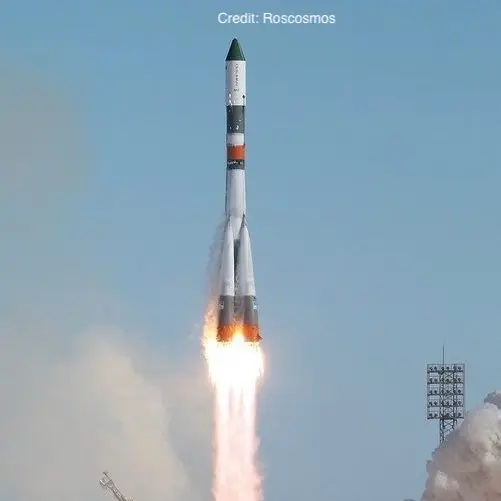Soyuz TM-30
Launch Success
Liftoff Time (GMT)
05:01:29
Tuesday April 4, 2000
Mission Details
Launch Notes
First private crewed space mission.
Soyuz TM-30
Soyuz TM-30 (Russian: Союз ТМ-30), also known as Mir EO-28, was a Soyuz mission, the 39th and final human spaceflight to the Mir space station. The crew of the mission was sent by MirCorp, a privately funded company, to reactivate and repair the station. The crew also resupplied the station and boosted the station to an orbit with a low point (perigee) of 360 and a high point (apogee) of 378 kilometers (223 and 235 miles, respectively); the boost in the station's orbit was done by utilizing the engines of the Progress M1-1 and M1-2 spacecraft. At that time a transit between Mir and the International Space Station was already impossible - such a transfer was deemed undesired by NASA - and the orbital plane of ISS had been chosen some time before to be around 120 degrees away from that of Mir. The mission was the first privately funded mission to a space station. The mission was part of an effort by MirCorp to refurbish and privatize the aging Mir space station, which was nearing the end of its operational life. Further commercially funded missions beyond Soyuz TM-30 were originally planned to continue the restoration efforts of the then 14-year-old space station, but insufficient funding and investment ultimately led to the de-orbit of the station in early 2001. The Soyuz is a Soviet crewed spaceship, developed to made crewed lunar missions. This version called 7K will fly 4 times on the giant launcher N1, and several tens of times on Proton to fly over the Moon, which will be successful during the mission Zond 4. Soyuz will become the first spacecraft to transport living beings to the Moon during the flight of Zond 5, with two turtles. Subsequently, it is adapted to low orbit and will fly on the Soyuz launcher to serve the Salyut and Mir stations and the ISS.
Low Earth Orbit
1 Payload
7,150 kilograms
Rocket


Manufacturer
RKK EnergiyaPrice
$20.00 million
Rocket
Height: 51.32m
Payload to Orbit
LEO: 6,860 kg
GTO: 0 kg
Liftoff Thrust
4,456 Kilonewtons
Fairing
Diameter: 3m
Height: 15.59m
Stages
3
Strap-ons
4
Launch Site
Stats
Soyuz U
768th
Mission
4th
Mission of 2000
2000
20th
Orbital launch attempt